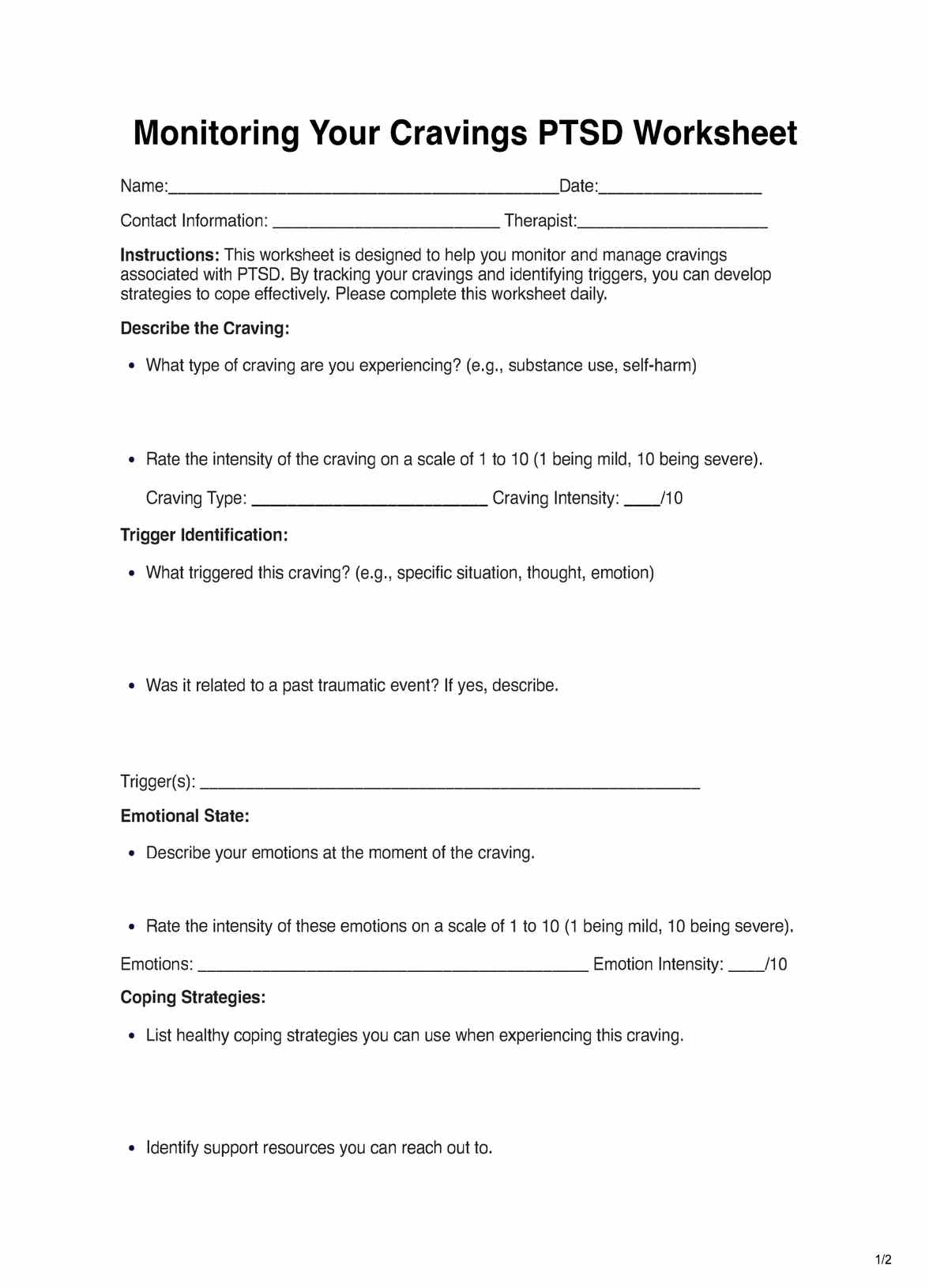This worksheet can be used by individuals dealing with PTSD to track and manage their cravings. It can also be utilized by healthcare professionals, including therapists, counselors, and addiction specialists, as a tool in therapy and treatment planning.

Monitoring Your Cravings PTSD Worksheet
Manage PTSD cravings with our specialized worksheet. Take control of your healthcare journey with Monitoring Your Cravings PTSD Worksheet.
Use Template
Monitoring Your Cravings PTSD Worksheet Template
Commonly asked questions
Benefits include enhanced self-awareness, structured monitoring of cravings, customized coping strategies, improved communication between clients and healthcare providers, relapse prevention, and long-term progress tracking.
This worksheet is handy for individuals with co-occurring substance use issues and PTSD. It helps them monitor and manage cravings, reducing the risk of relapse.
EHR and practice management software
Get started for free
*No credit card required
Free
$0/usd
Unlimited clients
Telehealth
1GB of storage
Client portal text
Automated billing and online payments











